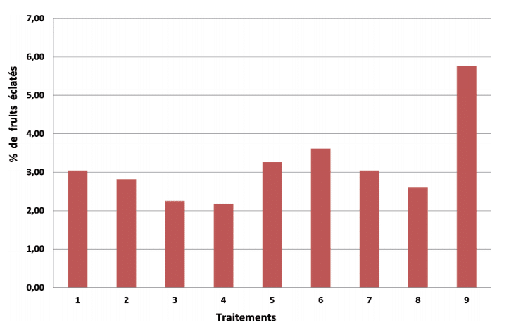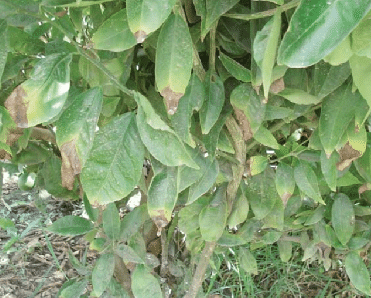Calcium Foliar Fertilizer to treat and prevent Citrus Bark Bursting
The bursting of citrus fruit causes great losses for the farmers. This disease, which has no microbial cause, can be treated with calcium-based foliar fertilization.
The bursting of the bark of citrus fruit causes a drop in profitability because the fruits become unsalable. In some years, the “cracked” citrus fruit rate has reached record levels. In Morocco, fruit bursting affects 15 to 40% of production and generates 3 to 7 tonnes of losses per hectare.

Cracking of the bark is an abiotic physiological disease; it has no microbial cause (pest, virus, fungus …). It can be caused by various factors of climatic origin, genetics, etc.
According to some researches of Carlos Mesejo, professor, two parameters impact the probability of bursting: the capacity of water absorption at certain stages of growth and the elasticity of the skin. The professor advises against the use of gibberellin products (gibberellic acid) which can intensify cracks. Instead, Mr. Mesejo recommended the use of products to increase the thickness of the bark such as calcium fertilizers.
Calcium-based fertilization
An experiment on the benefits of foliar calcium fertilization on citrus burst has been conducted in Morocco and more specifically in the Ghrab on Marisol clementines. Two different solutions based on calcium were tested: calcium nitrate Ca (NO3) 2 at 2 and 4% and calcium chloride CaCl2 at 0.2 and 0.4%. The purpose of the experiment was to determine which product, concentration and frequency of application are most suitable against bursting citrus fruits.
| Traitements | Product, dose and frequency of application |
|---|---|
| 1 | 2 x Ca(NO3) 2 2% |
| 2 | 3 x Ca(NO3) 2 2% |
| 3 | 2 x Ca(NO3) 2 4% |
| 4 | 3 x Ca(NO3) 2 4% |
| 5 | 2 x CaCl2 0,2% |
| 6 | 3 x CaCl2 0,2% |
| 7 | 2 x CaCl2 0,4% |
| 8 | 3 x CaCl2 0,4% |
| 9 | Control without calcium intake |

Effect of different treatments on the rate of broken fruit
According to this experiment, foliar applications of calcium should be made at an early stage of development. For example, with clementine, applications begin as soon as the majority of fruits are 10 mm in diameter. In general, spraying is done in June or July. Each application is spaced two weeks apart.

Foliar burns caused by calcium chloride
The burst effect of fruit reduced with the two products used: Ca (NO3) 2 and CaCl2. The higher the concentration and the number of sprays, the lower the burst degree. In contrast, the use of CaCl2 caused leaf burns in the experiment.
According to the experiment, the most effective treatment consists of 3 sprays of Ca (NO3) 2 4% spaced two weeks apart. Calcium treatment reduces the bursting effect of citrus fruits by 68% on average, increasing the yield per hectare by 14%. In the experiment, yield increased by 3.3 T / ha.
| Stage | Effects of calcium |
|---|---|
| Flowering | Promotes leaf growth, pollination and fruit set |
| fruit setting | Improve productivity and fruit quality |
| Development and maturation of fruits | Stimulates leaf growth and tree vitality, reduces fruit bark alterations, including bursting and degradation of albedo |
| Postharvest | Maintains the health and productivity of the roots, encourages the growth of young leaves |
Advice
Beware of rains that occur in late summer or early fall (August and September). According to Professor Mesejo, excessive water absorption causes the fruit to burst, especially when the showers come after a period of drought. Even if irrigation is perfectly controlled, fruits can burst as a result of thunderstorms: the more rain there is, the greater the risk of bursting. This phenomenon is particularly observed on farms with sandy soil.










 English
English Français
Français Arabe
Arabe